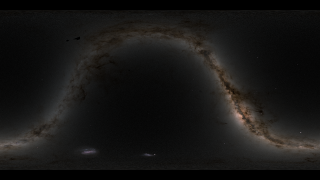Universe
ID: 3895
This set of star maps was created by plotting the position, brightness, and color of just over 100 million stars from the Bright Star, Tycho-2, and UCAC3 star catalogs. The constellation boundaries are those established by the International Astronomical Union in 1930. The constellation figures also come from the IAU, although they're not official.
The maps are presented in plate carrée projections using either celestial (J2000 geocentric right ascension and declination) or galactic coordinates. They are designed for spherical mapping in animation software. The oval shapes near the top and bottom of the star maps are not galaxies. The distortion of the stars in those parts of the map is just an effect of the projection.
The celestial coordinate mapping will be the more useful one for animation, since camera rotations in the software will correspond in a straightforward way to the right ascension and declination in astronomy references. The galactic coordinate mapping works as a standalone image showing the edge-on view of our home galaxy, from the inside.
The animation demonstrates the use of the maps in a tour of the sky. The tour starts at W-shaped Cassiopeia, then heads south through Perseus to the winter constellation of Orion the Hunter and the Hyades and Pleiades star clusters in Taurus. It moves southeast past Orion's canine companion and its star, Sirius, brightest in the sky, eventually pausing at the rich southern hemisphere portion of the Milky Way in Carina and Crux, the Southern Cross.
East of the Cross, in Centaurus, is the binary star Alpha Centauri, at 4.4 light-years the naked-eye star system nearest to the Sun. Also visible as a fuzzy spot near the top of the frame is the globular cluster Omega Centauri. The number of stars used to draw the star maps is large enough to reveal many globular and open star clusters as well as the Large and Small Magellanic Clouds.
After passing near the celestial south pole, the tour moves north along the Milky Way to the center of our galaxy near the teapot in Sagittarius. The tour veers northwest from there, finally stopping at the familiar Big Dipper or Plough asterism in Ursa Major.
This is an update to entry 3572.
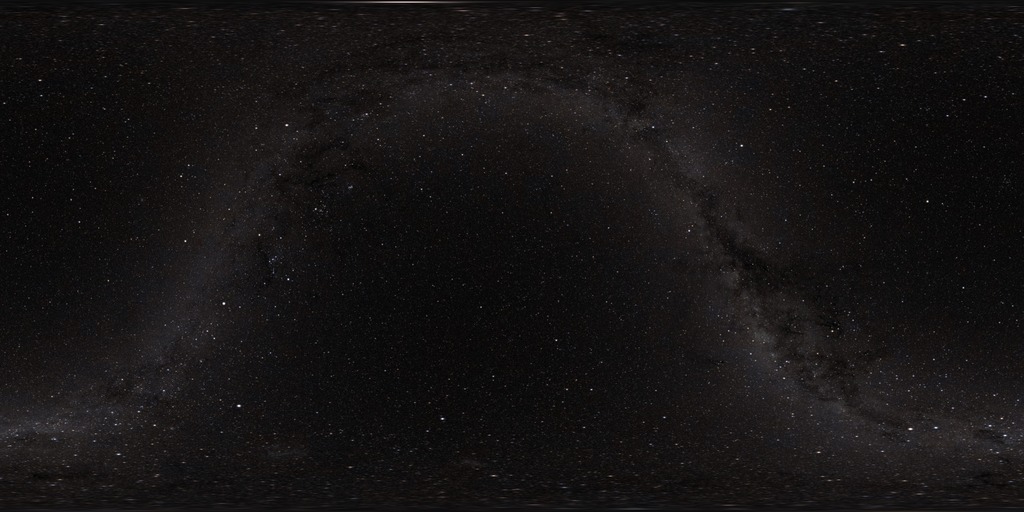
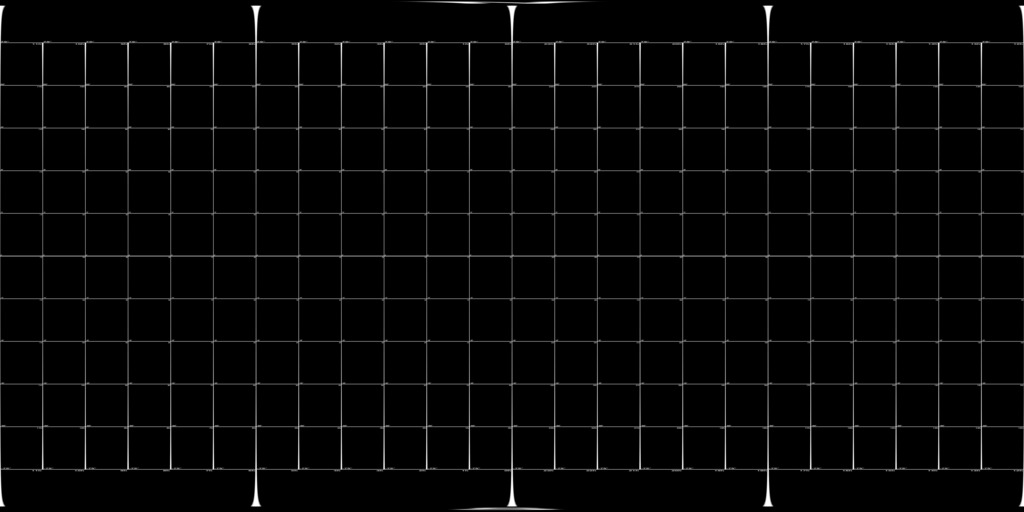
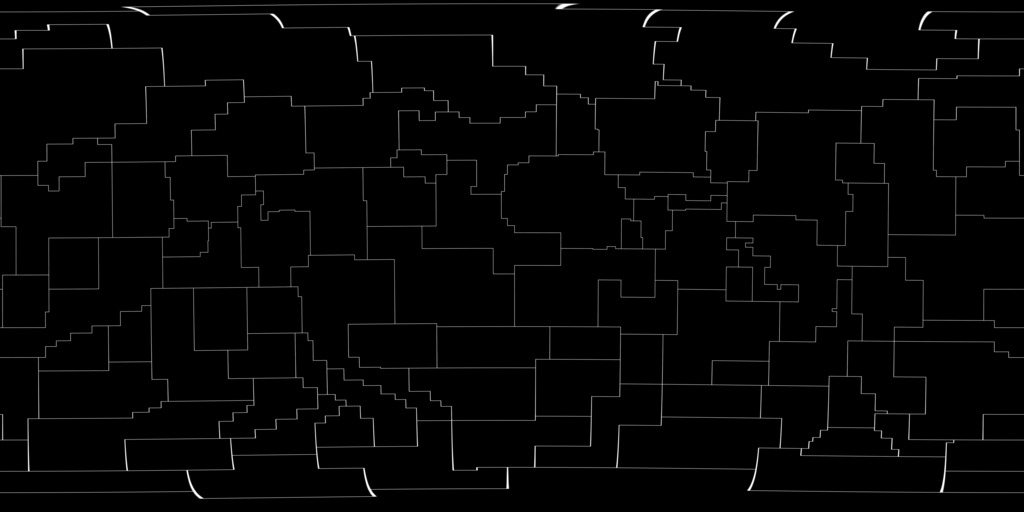
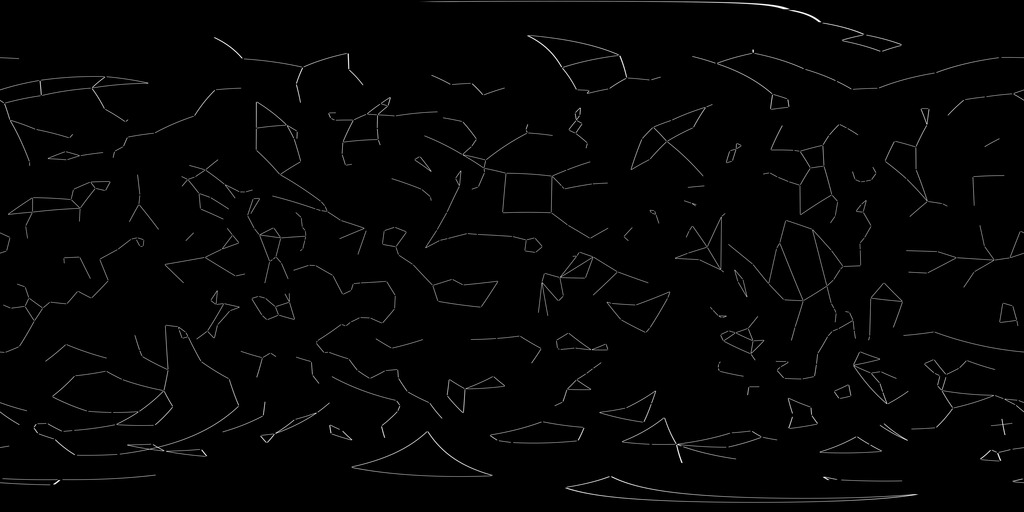
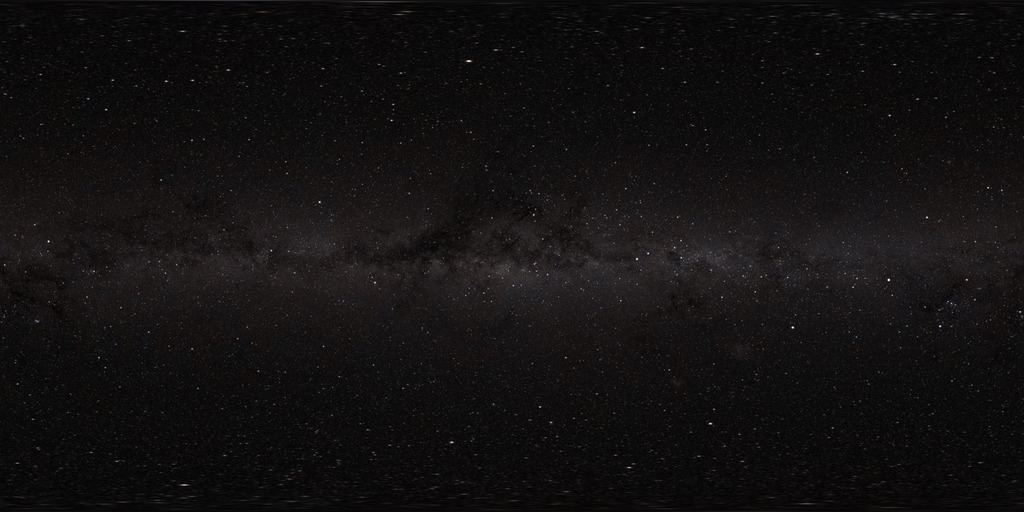
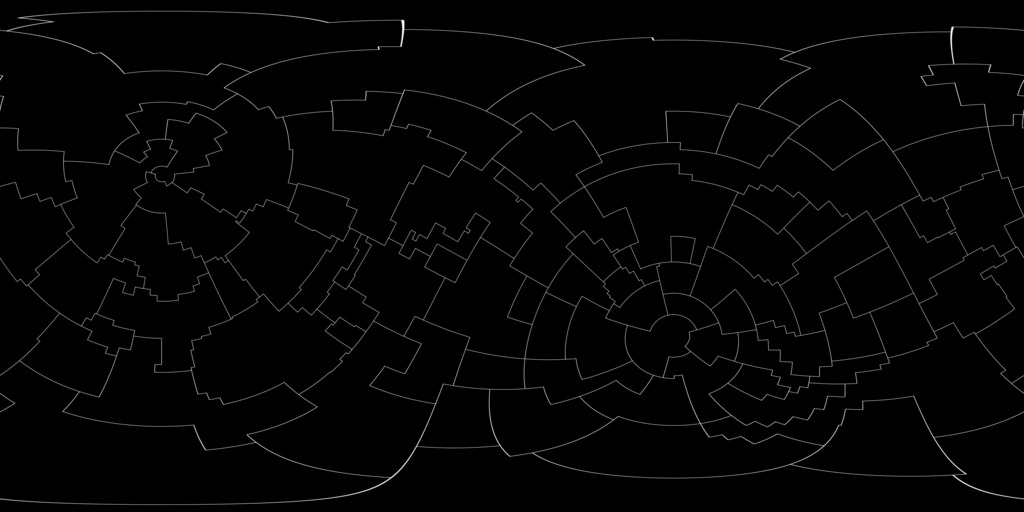

Deep Star Maps
There is a newer version of this story located here: https://svs.gsfc.nasa.gov/4851
The maps are presented in plate carrée projections using either celestial (J2000 geocentric right ascension and declination) or galactic coordinates. They are designed for spherical mapping in animation software. The oval shapes near the top and bottom of the star maps are not galaxies. The distortion of the stars in those parts of the map is just an effect of the projection.
The celestial coordinate mapping will be the more useful one for animation, since camera rotations in the software will correspond in a straightforward way to the right ascension and declination in astronomy references. The galactic coordinate mapping works as a standalone image showing the edge-on view of our home galaxy, from the inside.
The animation demonstrates the use of the maps in a tour of the sky. The tour starts at W-shaped Cassiopeia, then heads south through Perseus to the winter constellation of Orion the Hunter and the Hyades and Pleiades star clusters in Taurus. It moves southeast past Orion's canine companion and its star, Sirius, brightest in the sky, eventually pausing at the rich southern hemisphere portion of the Milky Way in Carina and Crux, the Southern Cross.
East of the Cross, in Centaurus, is the binary star Alpha Centauri, at 4.4 light-years the naked-eye star system nearest to the Sun. Also visible as a fuzzy spot near the top of the frame is the globular cluster Omega Centauri. The number of stars used to draw the star maps is large enough to reveal many globular and open star clusters as well as the Large and Small Magellanic Clouds.
After passing near the celestial south pole, the tour moves north along the Milky Way to the center of our galaxy near the teapot in Sagittarius. The tour veers northwest from there, finally stopping at the familiar Big Dipper or Plough asterism in Ursa Major.
This is an update to entry 3572.







Newer Version
Visualization Credits
Please give credit for this item to:
NASA/Goddard Space Flight Center Scientific Visualization Studio. Constellation figures based on those developed for the IAU by Alan MacRobert of Sky and Telescope magazine (Roger Sinnott and Rick Fienberg).
NASA/Goddard Space Flight Center Scientific Visualization Studio. Constellation figures based on those developed for the IAU by Alan MacRobert of Sky and Telescope magazine (Roger Sinnott and Rick Fienberg).
Short URL to share this page:
https://svs.gsfc.nasa.gov/3895
Data Used:
Note: While we identify the data sets used in these visualizations, we do not store any further details nor the data sets themselves on our site.
Keywords:
SVS >> Galaxy
SVS >> HDTV
SVS >> Astrophysics
SVS >> Universe
SVS >> Sky Map
SVS >> Space
SVS >> Constellation
SVS >> Star
SVS >> Space Science
SVS >> Astronomy >> Milky Way
SVS >> Astronomy >> Constellations >> Big Dipper
SVS >> Astronomy >> Constellations >> Orion
SVS >> Astronomy >> Constellations >> Taurus
SVS >> Astronomy >> Constellations >> Canis Major
SVS >> Astronomy >> Constellations >> Saggitarius
SVS >> Astronomy >> Constellations >> Southern Cross
NASA Science >> Universe
https://svs.gsfc.nasa.gov/3895
Data Used:
Yale Bright Star Catalogue also referred to as: Bright Star Catalogue
Database - YaleHipparcos/Telescope/Tycho 2 Catalogue also referred to as: Tycho Catalogue
DatabaseU.S. Naval Observatory/Third CCD Astrograph/Catalog also referred to as: UCAC3
Database - USNOKeywords:
SVS >> Galaxy
SVS >> HDTV
SVS >> Astrophysics
SVS >> Universe
SVS >> Sky Map
SVS >> Space
SVS >> Constellation
SVS >> Star
SVS >> Space Science
SVS >> Astronomy >> Milky Way
SVS >> Astronomy >> Constellations >> Big Dipper
SVS >> Astronomy >> Constellations >> Orion
SVS >> Astronomy >> Constellations >> Taurus
SVS >> Astronomy >> Constellations >> Canis Major
SVS >> Astronomy >> Constellations >> Saggitarius
SVS >> Astronomy >> Constellations >> Southern Cross
NASA Science >> Universe
